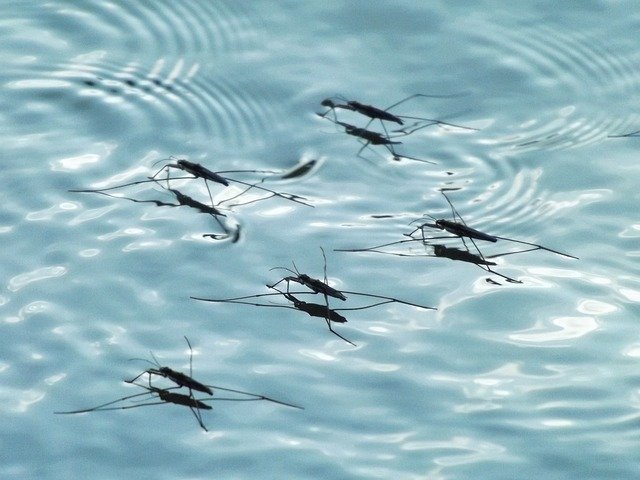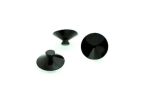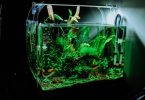Table of Contents
Fish tank can be a very interesting addition to your home but they can be the ideal habitat for mosquitoes to to lay eggs. So, a big question from our commonly asked is how to get rid of mosquito larvae in fish tank?
Fortunately, there are a few simple natural methods for eliminating mosquito larvae. Let’s start with a definition of mosquito larvae in fish tanks before we dive into eliminating them.
What exactly are mosquito larvae?
Mosquito larvae develop from fertilized eggs. Larvae can survive in water for up to two months, depending on the temperature.
Adult mosquitoes can only be produced if sufficient amounts of food and energy are provided to the mosquito larvae. Algae, fungi, plankton, and whatever else fits in their mouths provide them with the fuel they require.
The larvae of other mosquito species commonly coexist with those of Toxorhynchites, the largest species of mosquito.
Moreover, they go through several skin sheddings before entering the pupal stage, which they emerge from a mere two to three days later as a fully developed mosquito.
What do they feed on?
The larvae of mosquitoes have bodies that are in the form of tubes, the larvae survives by feeding on the bacteria that grows in water that is stagnant.
The larvae also feed on the algae and on the fungi that grow in ponds and lakes without any form of aeration.
Males typically survive for ten days while the females survive for about fifty-six days.
The initial three stages of the life of a mosquito are within water, till the last stage which is the stage of adulthood when the mosquitoes are able fly. Which are about four stages of life:
- Eggs hatch when they are immersed in water
- Larvae live in the water, breathe air and molt severally.
- The tumbler is the stage in which the mosquito does not require to feed, and this stage occurs before it matures to adulthood
- The adult then comes out of the water and starts to fly once the parts of its body harden.
Do fish eat mosquito larvae?
Some fish species consume mosquito larvae as a food source and this helps in preventing mosquito eggs from hatching and larvae from maturing into adult mosquitoes.
Several species of fish, including mosquito fish, guppies, tilapia, minnow, goldfish, and koi, are well-known for their ability to feed on larvae.
It also depends on how big your fish tank is and also the temperature. Some fish, such as koi carp, may not eat many larvae, so doing your research and mixing it with other fish can help you avoid larvae in the fish tank.
Are mosquito larvae harmful in fish tank?
It’s not surprising that mosquitoes would choose a stagnant aquarium as a breeding ground for their offspring.
So, when mosquitoes visit to lay their eggs in your aquarium, you need not worry. As long as fish continue to consume the larvae, it is also a completely safe source of live food for them.
How long can a mosquito larvae survive in fish tank
Mosquito larvae develop from most eggs in under 48 hours.
After about 5 days in the water, the larvae become pupae by coming to the surface for air. As soon as they enter the pupal stage, they only need a few more days to emerge as adult mosquitoes.
Until they reach sexual maturity, they must spend about a week traveling to watering holes in search of food.
Prevention of mosquito larvae in fish tank
Stopping them is preferable to killing them at this point.
Second, preventative measures are better for you and your environment. Here are some effective prevention methods.
What Can Be Done to Prevent Mosquito Larvae in a Fish Tank?
Although they do not typically cause significant issues for fish or aquariums, some people are worried about the potential harm they may cause.
Since not all fish eat the larvae, there are those who would like to see them eliminated or kept in check. Consider taking these precautions if you want to keep them from turning into a bloodsucking mosquito.
1. Changing the water
The issue can be remedied by regularly replacing the water, as is the case with any other issue.
A fresh supply of water can be maintained with less surface churn by simply replacing it on a regular basis. As a result, the water won’t become stagnant, and mosquitoes won’t be able to lay eggs.
2. Stock your aquarium with fish that will eat them.
Having fish in the fish tank that feed on mosquito larvae is a natural way to get rid of them. Many species of fish, including mosquito fish, goldfish, and guppies, eat mosquito larvae.
They will continue to serve you so long as you keep them in the tank. This is a great method for eliminating mosquito larvae in aquariums.
But make sure the water temperature is suitable for the fish you intend to add, as not all fish can tolerate the same range.
Species of fish that eat mosquito larvae
-
The mosquito fish
Judging by its name, this organisms feeds on the larvae of mosquitoes. They don’t occupy too many spaces and they are suitable for just any parameter and body of water.
They are small in size and require a lot of space so that they can hide from natural predators.
-
Poecilia Reticulata (Guppies)
This species are somewhat related to the mosquito fish and they equally feed on the larvae of fishes. They have more alluring colours that makes them suitable to be ornaments in ponds.
This species do not exceed 2 inches in length and they swim very fast, which makes them key predators of the mosquito larvae.
Because they are species of tropical fishes, they avoid atmosphere with temperatures that are below fifty-four degrees. They are called a rainbow fish or a rainbow fish because they are widely distributed.
3. Net your tank top
Tank top nets are also an easy way to keep mosquitoes out of your aquarium. In this way, they might not be able to get to the water’s surface to lay eggs, which would prevent any larvae from developing.
4. Net them out
In their mature state, larvae resemble tadpoles more closely. The best course of action at this point would be to simply remove them with a net and dispose.
5. Water Flow
Having a strong current on the surface of the water is another method to keep mosquitoes from settling in your tank to breed.
To prevent mosquitoes from laying eggs, water flow is crucial. Keeping the water moving is essential because the larvae can’t live in it.
Since female mosquitoes need to find a place to lay their eggs, they will persistently seek out any standing water.
An aquarium’s filtration system and pump can keep the water from becoming too still and stale.
6. Reduce vegetation
We can reduce the amount of vegetation, or plants, in our fish tanks to stop them from maturing into adult mosquitoes.
This prevents the larvae from consuming any food, which leads to their eventual demise. Keep your fish tank looking nice and healthy by eliminating algae and eliminating food sources for larvae.
7. Chemical larvicides
Chemicals may be used to stop the reproduction of larvae if their population is growing out of control and immediate action is needed.
Chemicals such as pyriproxyfen and methoprene can be used to used to inhibit insect growth hormone.
The use of these chemicals also stops mosquito eggs from hatching into adult mosquitoes. It’s important to take precautions when using this method because these chemicals can severely harm the aquatic environment.
8. Deal with the mosquito population around your property
Your pond may be a major breeding ground for mosquitoes, but chances are they have found homes in other areas around your property as well. Eliminate standing water when possible.
9. Curb algae
When mosquito larvae hatch, they need a food source to fuel their growth. Try using a pond algaecide to get rid of organic matter.
10. Install a screen top.
Most fish tank owners prefer to have topless tanks. Although it requires little upkeep, it is a breeding ground for mosquitoes.
You should cover the top of your fish tank with a screen. The difficulty lies in determining the appropriate size.
Either visit a pet store that specializes in reptiles, or have a go at it on your own. Netting material is widely available and can be used to construct the screen top.
Frequently Asked Questions
-
Can I use baking soda to get rid of mosquitoes in my fish tank?
Using baking soda to kill larvae is inefficient. In other words, it can only be used to disinfect fish tanks, and even then, it might not be enough to get rid of the problem altogether.
-
Do mosquito larvae float to the surface?
The mosquito itself is so tiny that it’s hard to even fathom how tiny its eggs might be. Thus, you can’t see them at all unless you use a magnifying glass.
-
What can be done to stop the breeding of mosquitoes?
The use of a net over the fish tank or the elimination of any standing water are both effective means of avoiding this problem.
Conclusion
Thank you for reading our article on how to eliminate mosquito larvae in a fish tank.
Although mosquito larvae in a fish tank may be an issue for some, it’s usually not too difficult to eliminate them by following the steps outlined above.
Let us know what you think! don’t hesitate to let us know if there are any mosquito repellants that we forgot to mention.







